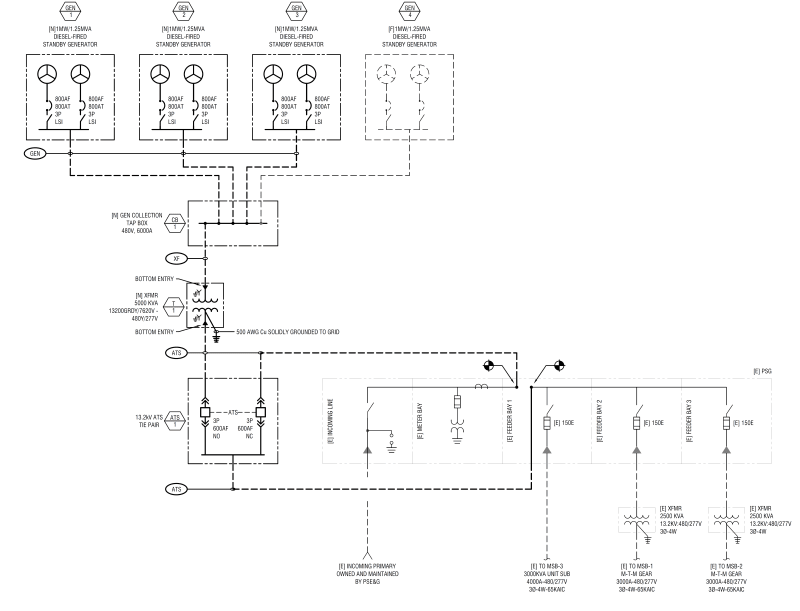lyla1711
Electrical
- Jul 8, 2020
- 13
I'm hoping to get some advice for integrating some parallel generators and a step-up transformer at an industrial plant.
We have (4) 1MW generators which will be paralleled and backfeed a single 480-13.2 step-up transformer. This will feed a service rated MV ATS and pick up the entire plant. I'm struggling with the transformer configuration and the grounding. Would one typically go with a 480V Delta - 13.2 Grounded Wye for this application? The last one I worked on was Grounded Wye - Grounded Wye, and I'm not sure why they did that.
The gens will each have (2) 800A breakers, so we won't be implementing ground fault and our MV transfer switch that will be a 3P, solid neutral type.
Can anyone point me in the right direction on this one?
We have (4) 1MW generators which will be paralleled and backfeed a single 480-13.2 step-up transformer. This will feed a service rated MV ATS and pick up the entire plant. I'm struggling with the transformer configuration and the grounding. Would one typically go with a 480V Delta - 13.2 Grounded Wye for this application? The last one I worked on was Grounded Wye - Grounded Wye, and I'm not sure why they did that.
The gens will each have (2) 800A breakers, so we won't be implementing ground fault and our MV transfer switch that will be a 3P, solid neutral type.
Can anyone point me in the right direction on this one?


